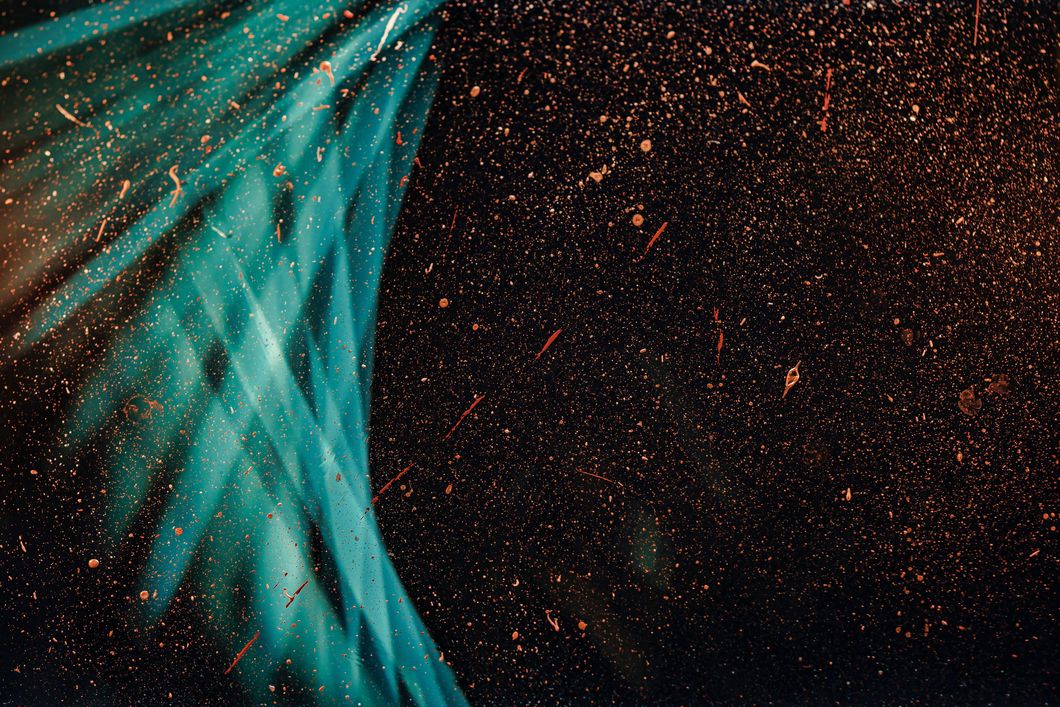The word fluxus originates from the Latin word meaning "flowing." Like its name suggests, the Fluxus Movement puts emphasis on the experience of constructing art—an effusive flow of creativity—rather than the finished product. The movement challenges society's view on art and aims to break the boundaries between art and human experience. As a retaliation against the exclusive, elitist view of art, the Fluxus Movement extends a hand to the public, encouraging all people to create art through its focus on personal discovery.
During Proto-Fluxus in 1953, George Brecht, a prominent Fluxus artist, moved to New Jersey and was hired by Johnson and Johnson. Then in 1955, Brecht, a trained mathematician, began to experiment with art with methods based on chance, while another important proponent of Fluxus, John Cage, visited Brecht in Metuchen, New Jersey. In 1956, Cage began teaching the "Experimental Composition" class at the New School for Social Research in New York, becoming a huge influence in the ideas of Fluxus through his championing of using everyday objects in art and chance experimentation. The class was taken by many Fluxus artists such as George Brecht, Al Hansen, Dick Higgins, Allan Kaprow, Jackson Mac Low, George Segal, and Robert Watts.
The following year, George Brecht, Allan Kaprow, and Robert Watts began writing the "Project in Multiple Dimensions," challenging traditional structures of art and pedagogical methods. Watts then took on a position on the Voorhees Assembly Board and organized a program series about communication, including programs by Cage and Kaprow, the latter of whom performed the first Happening. Happenings, or an interactive performance event, was a term coined by Kaprow himself. There would be a few Happenings, such as Pastorale, performed by Kaprow at George Segal's farm, but at this point, Fluxus was not officially titled until 1962. In 1959, a group of artists who were students of Cage formed the New York Audio Visual Group and provided venues for experimental and performance art. Maciunas would often attend these performances, and later in 1961, he organized the first official Fluxus event at the AC Gallery in New York, an art gallery he co-owned. Titled Bread & AG, the event featured readings by poet Frank Kuenstler, and from here, AC Gallery—as well as other art venues—would host many other Fluxus events, ranging from performances to music to art exhibitions. This prime of Fluxus was demonstrated through a large array of artists, some namely Maciunas, Brecht, German multimedia artist Joseph Bueys, and Japanese multimedia artist Yoko Ono.
Although challenged by historians, many consider Maciunas' death in 1978 as the end of Fluxus. In fact, the last two large Fluxus events were tied to Maciunas: his funeral was named the Fluxfuneral, where many Fluxus artists performed, and his wake was called the Fluxfeast and Wake, where all food served was black, white or purple in color. Even so, smaller Fluxus events are still held today, and its core experimental and avant-garde themes live in the works of a multitude of modern artists, as Fluxus is an attitude that does not keep itself within any boundaries.







































